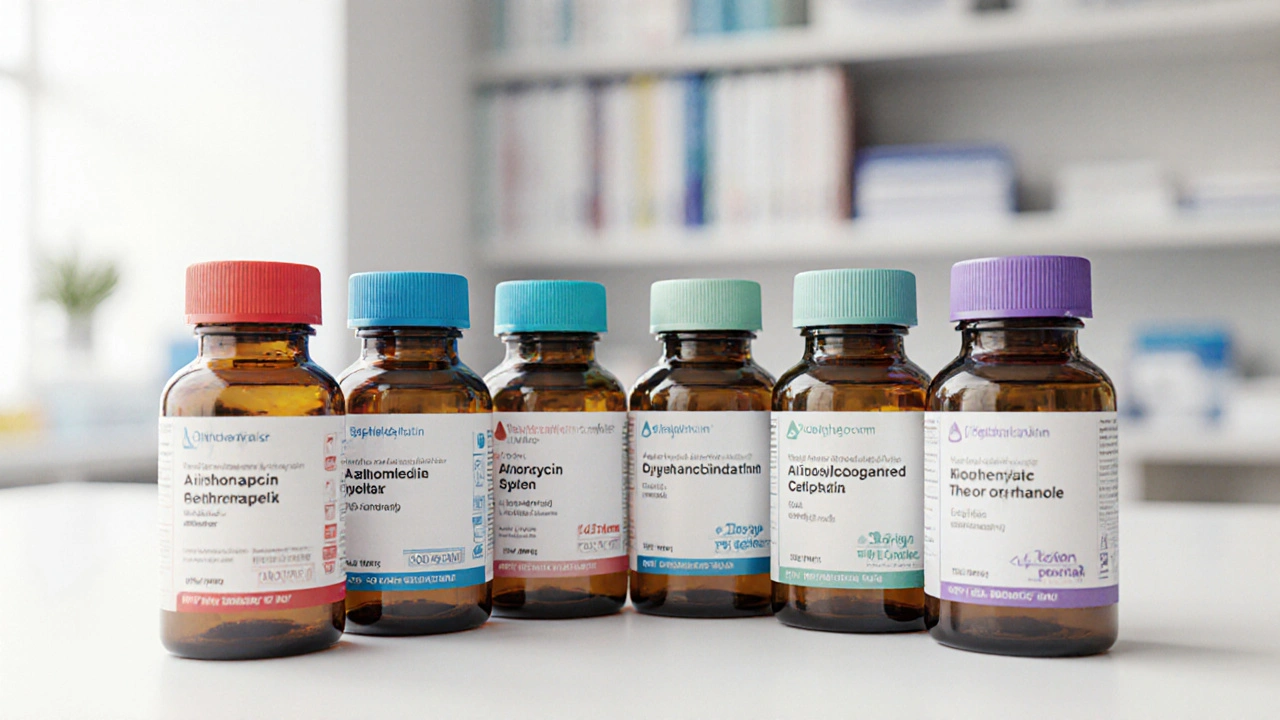Clindamycin alternatives – safe substitutes you should know
When looking for Clindamycin alternatives, other drugs that can replace the lincosamide antibiotic clindamycin in treating skin, bone, and respiratory infections. Also known as non‑clindamycin therapies, it helps clinicians avoid side effects and resistance issues. In many cases the first choice is Clindamycin, a lincosamide that works well against anaerobes and some gram‑positive bacteria. However, rising antibiotic resistance, the ability of bacteria to survive drug exposure makes doctors search for other classes. Common substitutes include penicillin‑based drugs, beta‑lactam antibiotics such as amoxicillin that target cell‑wall synthesis, and macrolides, a group like azithromycin that bind to bacterial ribosomes. Each option brings its own spectrum, side‑effect profile, and cost considerations. Choosing an alternative requires understanding the infection type, local susceptibility patterns, and patient factors like allergies or liver function. The relationship can be summed up as: “Clindamycin alternatives encompass other antibiotic classes,” “Selecting a substitute needs bacterial susceptibility data,” and “Antibiotic resistance influences the choice of clindamycin alternatives.”
Key factors to consider when picking a substitute
First, identify the pathogen. Laboratory culture or rapid PCR can tell you whether the bug is a Staphylococcus aureus, Streptococcus pyogenes, or an anaerobe. If the test shows a penicillin‑sensitive strain, a beta‑lactam often works faster and with fewer gastrointestinal side effects than clindamycin. When the organism produces beta‑lactamase, a combination like amoxicillin‑clavulanate or a cephalosporin may be better. For patients allergic to penicillin, a macrolide or a tetracycline becomes the go‑to. Second, weigh side effects. Clindamycin is notorious for causing C. difficile colitis; alternatives such as doxycycline or linezolid have lower gut‑flora disruption. Third, look at drug interactions. Some macrolides inhibit CYP3A4 and can raise levels of statins or certain anti‑arrhythmics, while penicillins are generally safe. Fourth, factor in dosing convenience. Once‑daily azithromycin improves adherence compared with the multiple‑daily doses required for clindamycin. Finally, consider cost and insurance coverage. Generic penicillins and doxycycline are often cheaper than brand‑name clindamycin, which can be a deciding point for long‑term therapy.
By keeping these points in mind, you can match the right alternative to each clinical scenario. Below you’ll find a curated list of articles that dive deeper into specific substitutes, compare efficacy, and offer practical buying tips. Whether you’re a patient trying to understand why your doctor switched meds or a clinician searching for the latest evidence, the posts ahead will give you clear, actionable information on the most relevant Clindamycin alternatives.

